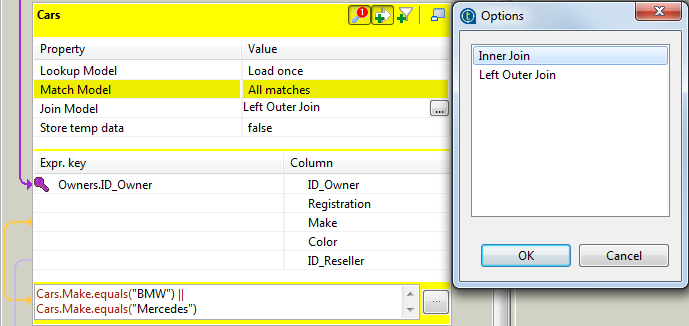Using Inner Join
The Inner join is a particular type of Join that distinguishes itself by the way the rejection is performed.
This option avoids that null values are passed on to the main output flow. It allows also to pass on the rejected data to a specific table called Inner Join Reject table.
If the data searched cannot be retrieved through the explicit Join or the filter Join, in other words, the Inner Join cannot be established for any reason, then the requested data will be rejected to the Output table defined as Inner Join Reject table if any.
Simply drop column names from one table to a subordinate one, to create a Join relationship between the two tables. The Join is displayed graphically as a purple link and creates automatically a key that will be used as a hash key to speed up the match search.
About this task
Procedure
Did this page help you?
If you find any issues with this page or its content – a typo, a missing step, or a technical error – let us know how we can improve!

